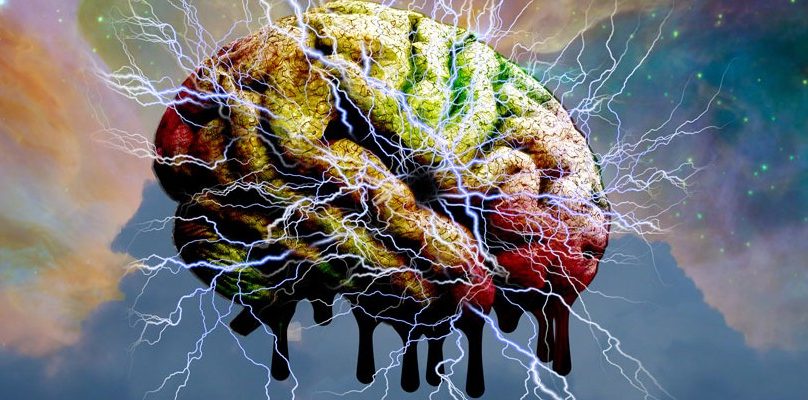
“Everything became imbued with a sense of vitality and life and vividness. If I picked up a pebble from the beach, it would move. It would glisten and gleam and sparkle and be absolutely captivating,” says neuroscientist Anil Seth. “Somebody looking at me would see me staring at a stone for hours.”
Or what seemed like hours to Seth. A researcher at the UK’s University of Sussex, he studies how the brain helps us perceive the world within and without, and is intrigued by what psychedelics such as LSD can tell us about how the brain creates these perceptions.
So a few years ago, he decided to try some, in controlled doses and with trusted people by his side. He had a notebook to keep track of his experiences. “I didn’t write very much in the notebook,” he says, laughing.
Instead, while on LSD, he revelled in a sense of well-being and marvelled at the “fluidity of time and space.” He found himself staring at clouds and seeing them change into faces of people he was thinking of. If his attention drifted, the clouds morphed into animals.
Seth went on to try ayahuasca, a hallucinogenic brew made from a shrub and a vine native to South America and often used in shamanistic rituals there. This time, he had a more emotional trip that dredged up powerful memories. Both experiences strengthened Seth’s conviction that psychedelics have great potential for teaching us about the inner workings of the brain that give rise to our perceptions.
He’s not alone. Armed with fMRI scans, EEG recordings, computational models of the brain and reports from volunteers tripping on psychedelics, a small but growing number of neuroscientists are trying to take advantage of these drugs and the hallucinations they induce to better understand how the brain produces perceptions.
The connections are still blurry, but the studies are beginning to provide new support for a provocative, more-than-a-century-old hypothesis: that one of the fundamental functions of the brain – and the root of everything we perceive – is to make best guesses about the causes of information impinging on our senses at any given moment.
Proponents of this idea have argued that these powers of prediction enable the brain to find meaning amid noisy and ambiguous sensory information, a crucial function that helps us make sense of and navigate the world around us.
Is the brain a passive organ that simply collates information from the senses? Or is it active co-conspirator?
When these predictions go haywire, as they seem to under psychedelics, the perceptual aberrations provide neuroscientists with a way to probe the workings of the brain — and potentially understand what goes wrong in neuropsychological conditions, such as psychosis, that cause altered perceptions of reality.
The idea that the brain is, in essence, a prediction machine traces its modern roots to the 19th century German physicist and physician Hermann von Helmholtz. He noted that our brains have to make inferences about the possible causes of the signals we receive via our senses. He pointed in particular to our ability to perceive different things given the same sensory information (a good example of this would be the famous optical illusion that can appear either as the silhouette of two people facing each other or as the contours of a vase).
Given that the sensory input isn’t changing, Helmholtz argued that what we perceive must be based on the brain’s prediction of what’s there, based on prior knowledge.
Over the past century, these ideas have continued to intrigue philosophers, neuroscientists, computer scientists and others. The modern version of the theory is called predictive processing. In this view of perception, the brain is not a passive organ that simply collates information from the senses. Rather, it’s an active co-conspirator.
It’s constantly predicting the causes of incoming information, whether from the world outside or from within the body. In this view of perception, “the brain is actively…creating hypotheses that are the best explanation for the sensory samples that it’s receiving,” says computational neuroscientist Karl Friston of University College London.
These predictions lead to perceptions, which can remain unconscious or enter conscious awareness.
In a landmark 1999 paper that established predictive processing as a leading hypothesis of brain function, two computer scientists, Rajesh Rao and Dana Ballard (now at the University of Washington in Seattle and the University of Texas at Austin, respectively) developed a detailed model of predictive processing – specifically, addressing regions of the brain involved in recognising objects and faces.
Those regions comprise levels of a pathway that begins in the retina, moves on to the lateral geniculate nucleus of the thalamus and then to higher and higher levels of the cerebral cortex, named V1, V2, V4, IT and onward.
In Rao and Ballard’s model, each brain area that constitutes a level in such a hierarchy makes predictions about the activity of the level below: V2, for example, predicts the neural activity it expects of V1 and sends a signal down to V1 indicating this prediction. Any discrepancy between the prediction and the actual activity in V1 generates an error signal that moves up from V1 to V2, so that V2 can update its expectations of V1.
So, predictions flow down, from higher to lower layers, and errors move up, from lower to higher layers. In this way of thinking, the lowest layer – the one closest to the retina – makes predictions about the incoming sensory information, and the highest layers – IT and above – hypothesise about more complex features like objects and faces.
Such predictions, continually updated as we move around, are what we perceive.
In the years since Rao and Ballard’s paper, neuroscientists have begun to find experimental evidence that supports such computational models. For example, the theory predicts that sensory stimuli that are expected or unsurprising should generate less neural activity in lower levels of the hierarchy (because they generate fewer error signals). And fMRI scans of neural activity in the lower layers of the visual cortex in people looking at computer-generated images bear this out.
If psychedelics reduce the brain’s reliance on prior beliefs about the world, one result could be an increase in cognitive flexibility.
But predictive processing can go wrong, posit behavioral and clinical neuroscientist Paul Fletcher and his student Juliet Griffin of the University of Cambridge in the UK – and when that happens, we may perceive things that aren’t real, be they aberrations of sight, sound or other senses. It’s an idea that piques the interest of those who study conditions such as schizophrenia, which is often accompanied by psychosis.
“If predictive processing helps us to understand how the mind connects to external reality, I think it follows that it is a useful way of understanding situations in which the mind seems disconnected from reality,” says Fletcher. Indeed, Fletcher notes, such disconnection is essentially the definition of psychosis.
(Griffin and Fletcher explored the potential connection between predictive processing and psychosis in the 2017 Annual Review of Clinical Psychology.)-
- A Nature magazine report











